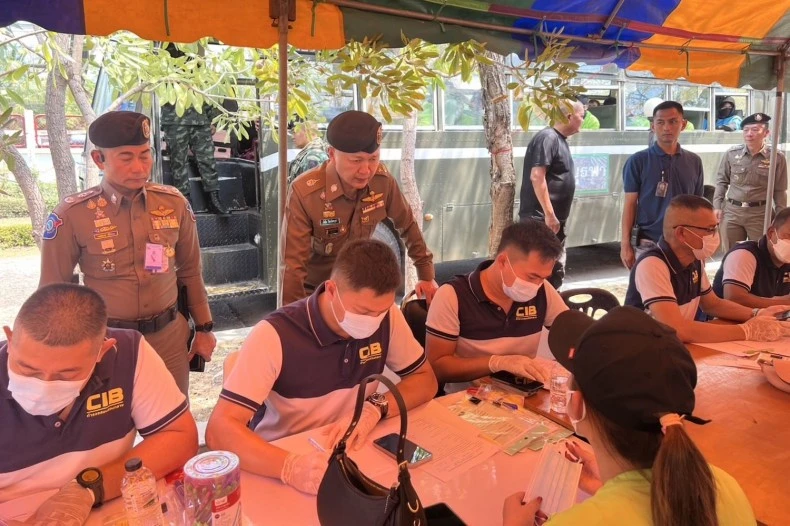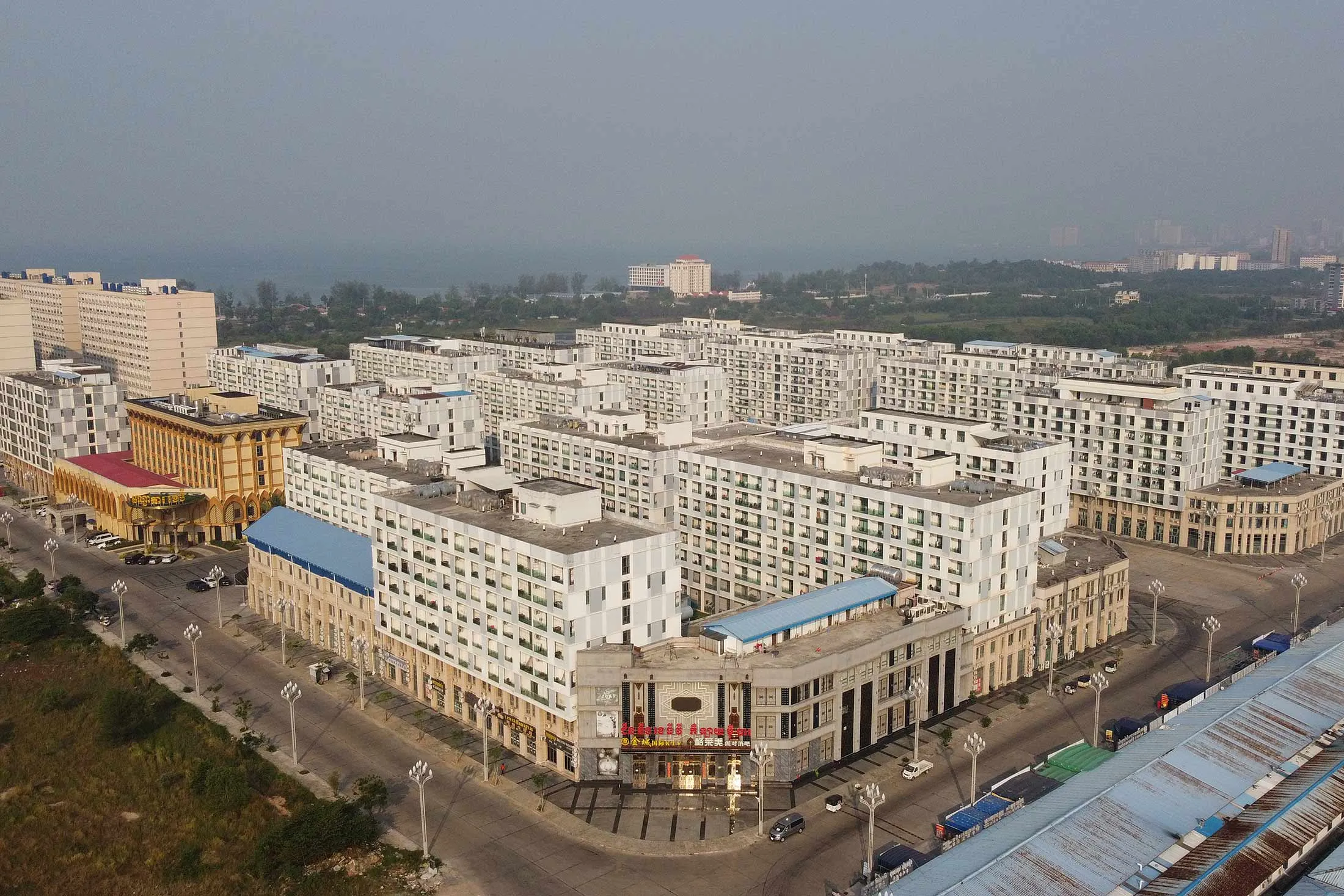How Money Laundering Works in Modern Scam Operations
This article provides a fascinating glimpse into the sophisticated money laundering networks that enable global scam operations, particularly those operating out of Cambodia. Let me break down some key aspects of how these operations work:
https://www.straitstimes.com/business/invest/how-scammers-launder-money-and-get-away-with-it
The Money Laundering Problem
When scammers successfully obtain funds from victims (through romance scams, fake crypto exchanges, etc.), they face a critical challenge: they need to move and “clean” the money quickly before:
- Banks detect suspicious transactions
- Victims realize they’ve been scammed and contact authorities
- Law enforcement can trace the funds
The Cambodia Connection
Cambodia appears to be a central hub for these operations, with:
- Phnom Penh serving as a “global clearinghouse” for money launderers
- Sihanoukville functioning as a refuge for fraudsters
- Operations run from fortified compounds or unfinished high-rises
- Open business conducted in seaside restaurants
Why Money Laundering Networks Persist
These operations continue to thrive despite efforts from the FBI, Interpol, China’s Ministry of Public Security and other agencies because:
- The money laundering system is “hydra-headed” – when stopped in one location, it emerges elsewhere
- They move billions of dollars at “dizzying speed”
- They use complex, multi-layered techniques that make tracing difficult
The article mentions a “money laundering handbook” that reveals methods for moving illicit funds that have proven “all but impossible to stop.”
The basic necessity for these scammers is similar to any financial crime – they need to quickly transfer funds through multiple accounts and across jurisdictional boundaries before detection occurs, making recovery extremely difficult.
Money Laundering in International Scam Operations: An In-Depth Analysis
The Money Laundering Process in Depth
Money laundering within scam operations typically follows three main stages, but with unique characteristics specific to modern digital fraud:
1. Placement
Initial Entry of Illicit Funds
- Immediate Transfer: Once victims transfer money, scammers quickly move it from the receiving account to multiple intermediary accounts, often within minutes.
- Account Mules: Scammers utilize networks of “money mules” – individuals who knowingly or unknowingly allow their accounts to be used. These may include:
- Recruited individuals who receive a small percentage
- Stolen or purchased identities and banking credentials
- Shell company accounts explicitly established for laundering
- Cryptocurrency Conversion: Rapid conversion to cryptocurrencies like Bitcoin, Tether, or Monero is becoming increasingly common. These cryptocurrencies offer pseudonymity and cross-border movement without traditional banking oversight.
2. Layering
Obscuring the Money Trail
- Chain Transactions: Funds pass through dozens or hundreds of accounts across multiple jurisdictions within hours.
- Smurfing: Large sums are broken into smaller amounts below reporting thresholds.
- Crypto Tumbling/Mixing: Services that pool cryptocurrency transactions to break the connection between sending and receiving addresses.
- Cross-Border Movement: Money rapidly crosses jurisdictional boundaries, exploiting gaps between different countries’ legal and financial systems.
- Multiple Currency Conversions: Funds are converted between fiat currencies and various cryptocurrencies multiple times.
3. Integration
Returning “Clean” Money to the Economy
- Front Companies: Money flows into seemingly legitimate businesses that may deal primarily in cash.
- Real Estate Investments: Purchasing properties in developing markets with minimal due diligence requirements.
- Luxury Goods Purchases: Acquiring high-value items that retain value but can be easily resold.
- Gambling Operations: Casinos provide opportunities to exchange cash for chips and back again.
- Financial Products: Investing in legitimate financial instruments after the money appears clean.
Why Cambodia Serves as a Hub
Cambodia has emerged as a key money laundering center for several structural reasons:
Regulatory Environment
- Underdeveloped AML Framework: Cambodia’s anti-money laundering regulations, while improving, have historically had significant gaps.
- Cash-Heavy Economy: Large cash transactions remain common, making it easier to integrate illicit funds.
- Banking Secrecy: Some Cambodian financial institutions maintain stronger privacy protections and less scrutiny of transactions.

Strategic Geography
- Regional Proximity: Located near major financial centers like Singapore, Hong Kong, and mainland China.
- Cross-Border Dynamics: Shares borders with Thailand, Vietnam, and Laos, allowing physical cash movement across boundaries.
Political Factors
- Corruption Challenges: Transparency International consistently ranks Cambodia among countries with significant corruption concerns.
- Limited Enforcement Resources: Government agencies lack sufficient staff, technology, and training to combat sophisticated financial crime effectively.
Economic Incentives
- Special Economic Zones: Areas like Sihanoukville have developed with minimal regulatory oversight.
- Investment Promotion: Policies designed to attract foreign capital sometimes inadvertently create opportunities for money laundering.
- Casino Industry: Cambodia’s large casino sector, particularly in border regions, facilitates cash conversion.
Prevention Strategies
Effective countermeasures require coordination across multiple sectors:
For Financial Institutions
- Advanced Transaction Monitoring: Implement AI-powered systems that detect suspicious patterns across account networks.
- Enhanced Due Diligence: Strengthen KYC (Know Your Customer) processes, particularly for high-risk clients and jurisdictions.
- Velocity Controls: Institute holding periods for large transfers, especially international ones.
- Cross-Border Cooperation: Share information with other institutions about suspicious activity.

For Governments
- Regulatory Harmonization: Align anti-money laundering standards across jurisdictions to eliminate regulatory arbitrage.
- International Partnerships: Strengthen cooperation between law enforcement agencies across borders.
- Dedicated Financial Intelligence Units: Create specialized teams focused on tracing complex money flows.
- Beneficial Ownership Registries: Implement transparent records of who ultimately owns companies and assets.
- Cryptocurrency Regulation: Develop comprehensive frameworks for digital asset oversight.
For Technology Companies
- Platform Accountability: Social media and dating platforms need improved detection of scam operations.
- Cryptocurrency Exchanges: Implement more robust transaction monitoring and suspicious activity reporting.
- Payment Processors: Develop better fraud detection algorithms specifically targeting scam patterns.
For Individuals
- Financial Literacy: Education about standard scam techniques and red flags.
- Verification Processes: Always verify investment opportunities through independent channels.
- Healthy Skepticism: Be wary of high-return investment opportunities, particularly those requiring cryptocurrency.
- Transaction Delays: Consider setting up banking alerts and holds on large transfers.
The Future of Anti-Money Laundering Efforts
The battle against scam-related money laundering is evolving in several directions:
- Blockchain Analytics: Advanced tools are improving the ability to trace cryptocurrency movements.
- Artificial Intelligence: Machine learning systems can detect laundering patterns too complex for traditional methods.
- International Regulatory Coordination: Bodies like the FATF (Financial Action Task Force) are pushing for stronger global standards.
- Public-Private Partnerships: Banks, tech companies, and governments share intelligence and resources.
The fundamental challenge remains criminal networks’ adaptability. As one avenue closes, they quickly develop new methods and move to more permissive jurisdictions. Effective prevention requires not just technical solutions but also addressing underlying governance issues in vulnerable countries like Cambodia.

Singapore’s Anti-Scam Centre: Fighting Financial Fraud
Singapore’s Anti-Scam Centre (ASC) has established itself as one of the most effective specialized units in Asia for combating scams and related money laundering. Established in 2019 by the Singapore Police Force, the ASC has developed a distinctive approach to countering financial fraud.
Core Functions of Singapore’s Anti-Scam Centre
Rapid Response Protocol
- “Time is Money” Approach: The ASC operates on the principle that swift action is crucial in scam cases, where funds can disappear across jurisdictions within hours.
- 24/7 Operations: Maintains round-the-clock monitoring and response capabilities.
- Immediate Fund Freezing: Works directly with financial institutions to freeze suspicious accounts, often within hours of a scam report.
Coordination Hub Model
The ASC functions as a central coordination point between:
- Singapore Police Force’s specialized units
- Local and international financial institutions
- Telecommunications companies
- Tech platforms (social media, e-commerce, etc.)
- International law enforcement partners
Technical Capabilities
- Data Analytics: Uses advanced algorithms to identify patterns across seemingly unrelated scam reports.
- Transaction Tracing: Specialized tools to follow money flows across multiple accounts and institutions.
- Digital Evidence Collection: Preserves and analyzes digital footprints left by scammers.
Key Success Factors
Strong Public-Private Partnership
Singapore’s ASC has established robust relationships with financial institutions, creating streamlined protocols for:
- Account freezing requests
- Transaction data sharing
- Suspicious activity reporting
Legal Framework Support
- Effective Legislation: Singapore has updated laws to specifically address modern scam techniques.
- Enhanced Powers: ASC officers have appropriate legal authority to request immediate action from financial institutions.
- International Agreements: Singapore has established bilateral and multilateral agreements to facilitate cross-border investigations.
Public Education Initiatives
- Scam Alert Website: Maintains up-to-date information on current scam techniques targeting Singaporeans.
- Community Outreach: Regular workshops and awareness campaigns, particularly targeting vulnerable groups.
- ScamShield App: Government-developed application that helps citizens identify and block potential scam calls and messages.
Measurable Impact
The ASC has demonstrated significant success in countering scams:
- Recovery Rate: Substantially higher recovery of scammed funds compared to global averages.
- Case Resolution: Improved clearance rates for scam investigations.
- Deterrent Effect: Singapore has become viewed as a higher-risk jurisdiction for scammers to target or operate from.
- Prevention Metrics: Reduced victim rates among populations reached by awareness campaigns.
Regional Leadership
Singapore’s ASC has become a model for other countries in Southeast Asia:
- Provides training and consultation to regional partners
- Shares intelligence about emerging scam trends
- Supports coordinated operations against cross-border scam networks
- Advocates for harmonized anti-scam legislative frameworks
Challenges and Limitations
Despite its successes, the ASC faces ongoing challenges:
- Jurisdictional Boundaries: Limited authority outside Singapore, particularly in regions like Cambodia, where many scam operations are based.
- Evolving Tactics: Scammers rapidly adjust their techniques to circumvent new controls.
- Cryptocurrency Complications: Tracing funds becomes more difficult once converted to certain digital assets.
- Victim Cooperation: Some victims report scams too late or are reluctant to share complete information.

The Singapore Anti-Scam Centre represents one of the more sophisticated institutional responses to the global scam crisis. It combines technological solutions with cross-sector collaboration and public education to create a comprehensive countermeasure system.
Maxthon
Maxthon has set out on an ambitious journey aimed at significantly bolstering the security of web applications, fueled by a resolute commitment to safeguarding users and their confidential data. At the heart of this initiative lies a collection of sophisticated encryption protocols, which act as a robust barrier for the information exchanged between individuals and various online services. Every interaction—be it the sharing of passwords or personal information—is protected within these encrypted channels, effectively preventing unauthorised access attempts from intruders.
 This meticulous emphasis on encryption marks merely the initial phase of Maxthon’s extensive security framework. Acknowledging that cyber threats are constantly evolving, Maxthon adopts a forward-thinking approach to user protection. The browser is engineered to adapt to emerging challenges, incorporating regular updates that promptly address any vulnerabilities that may surface. Users are strongly encouraged to activate automatic updates as part of their cybersecurity regimen, ensuring they can seamlessly take advantage of the latest fixes without any hassle.
This meticulous emphasis on encryption marks merely the initial phase of Maxthon’s extensive security framework. Acknowledging that cyber threats are constantly evolving, Maxthon adopts a forward-thinking approach to user protection. The browser is engineered to adapt to emerging challenges, incorporating regular updates that promptly address any vulnerabilities that may surface. Users are strongly encouraged to activate automatic updates as part of their cybersecurity regimen, ensuring they can seamlessly take advantage of the latest fixes without any hassle.
In today’s rapidly changing digital environment, Maxthon’s unwavering commitment to ongoing security enhancement signifies not only its responsibility toward users but also its firm dedication to nurturing trust in online engagements. With each new update rolled out, users can navigate the web with peace of mind, assured that their information is continuously safeguarded against ever-emerging threats lurking in cyberspace.
